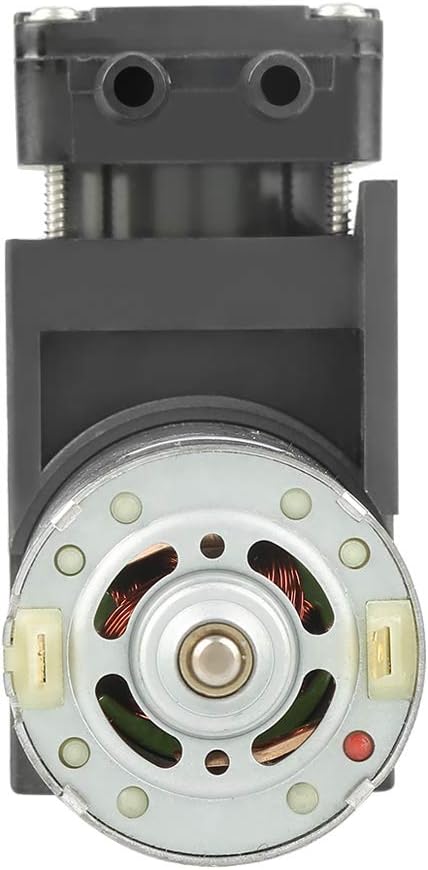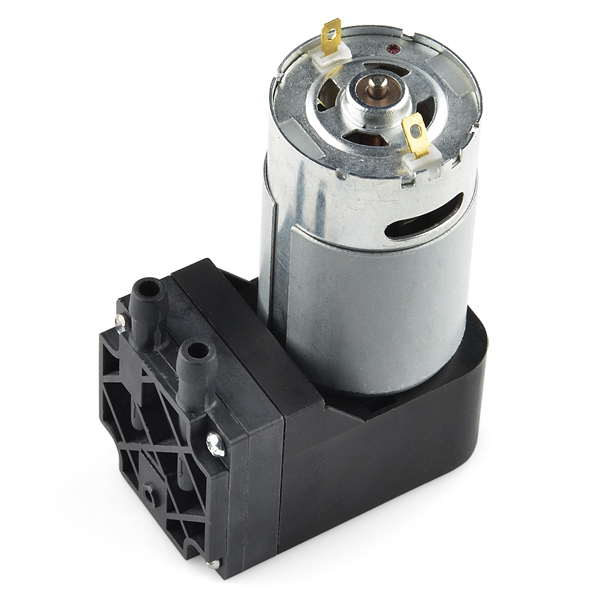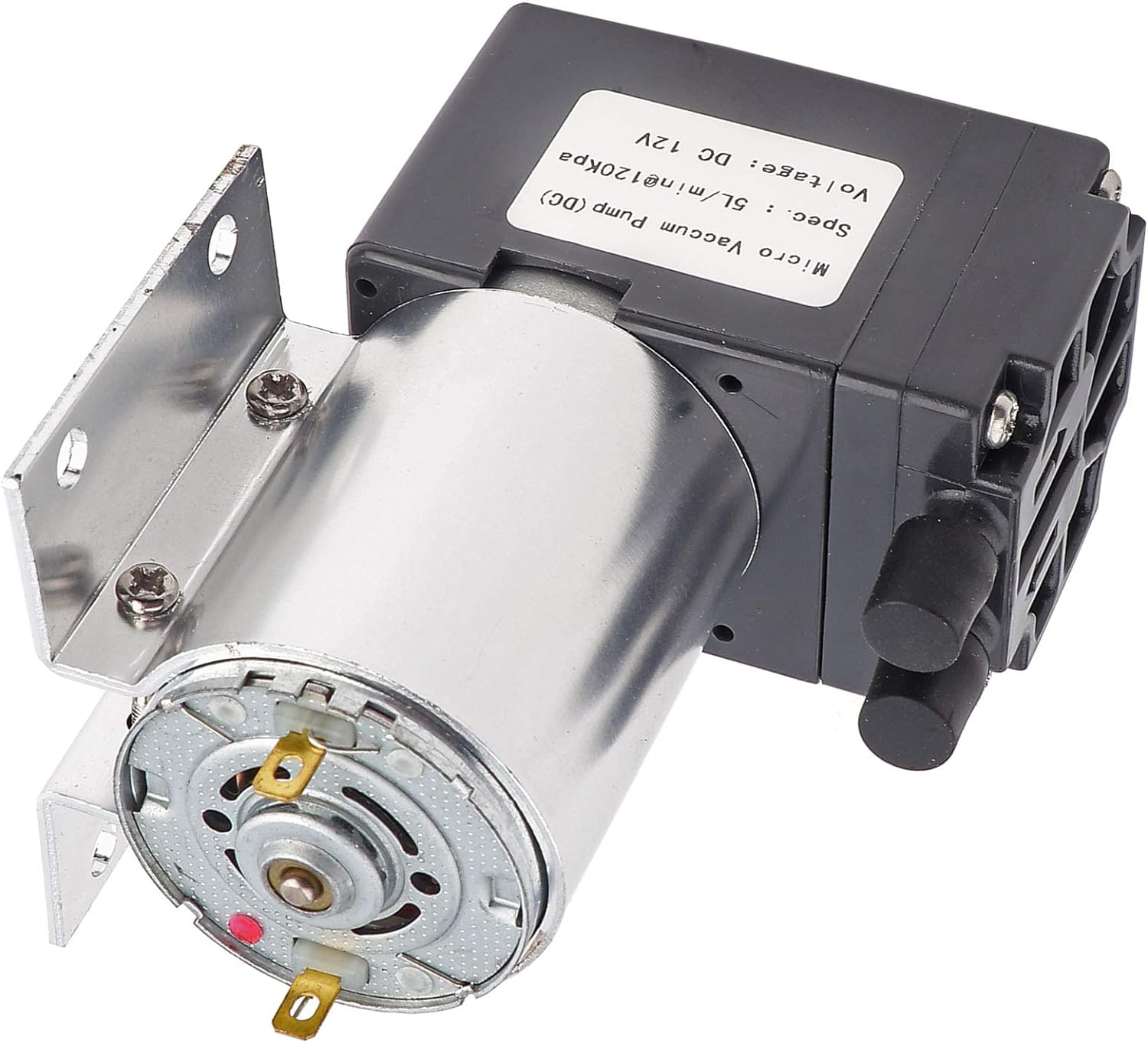Product Description
Product Description
Piston Oil Free Air Compressor Vacuum pump
OverviewSuoto piston vacuum pump is compact, light and attractive in design. It uses the big starting torque and is specially designed for low temperature environment. It is guaranteed start normally in winter’s low temperature. It is applicable to vacuum packaging, vacuum freezing, automobile reparation, gas analysis, medicine mechanism, printing mechanism and other vacuum evacuations.
This kind of pump is widely used in food packaging, scientific research, medical treatment, electronics, chemicals, medicine and laboratory of universities and colleges.
|
Technical Specifications |
|
|
Model |
HP-295 |
|
Voltage |
220V/50HZ; 110V/60HZ |
|
Free air displacement |
60L/min |
|
Ultimate Vacuum |
700mmHg |
|
Power |
325w |
|
Dimension |
250x110x180mm |
|
Using the environment |
5-40ºC |
|
Voltage resistance strength |
1600V/50HZ 1min No breakdown |
|
N.W. |
6.5KG |
Detailed Photos
Packaging & Shipping
Packing Details : One pump in One plywood case
Delivery Details : 30 days after order confirmation
Standard package without original wood, no fumigation needed.
Company Profile
ZheZheJiang oto Pump Industrial Co., Ltd. is a professional pump manufacturer integrating R&D, manufacturing, sales and service as a whole, which has been certified by ISO9001 international quality management system.
Located in Xihu (West Lake) Dis.a Industrial Park, ZheJiang , CHINAMFG Pump Industrial possesses 2 manufacturing bases in ZheJiang and ZHangZhoug. Since our inception, CHINAMFG Pump Industrial has been committed to the innovation and development of various pumps. Our leading products include self-priming trash pump, centrifugal pump, submersible pump, diaphragm pump, vacuum pump, diesel pump, fire pump, etc.
FAQ
Q: Can I chat with you online? What is your company official website?
A: Yes.
Q: What type of company CHINAMFG is?
A: CHINAMFG is a manufacture and trading company, has factories in ZheJiang and ZHangZhoug, with export and import license.
Q: What kinds of pumps do you supply?
A: Our products including self-priming trash pump, centrifugal pump, diaphragm pump, submersible pump, chemical pump, oil pump, diesel pump, fire fighting pump, etc.
Q: What is your payment terms?
A: Alibaba Trade Assurance, Western Union, Paypal, T/T, L/C, etc.
Q: Can you provide OEM, ODM service?
A: Yes. We have factories in ZheJiang and ZHangZhoug, we can make products according to your requirements.
Q: Why should we buy from you?
A: We are committed to provide best quality products at minimum delivery time and competitive price. We believe this is what customer wants. We are satified until customers are.
Q: What is your warranty period?
A: We provide 1 year of unconditional warranty on our products for the manufacturing defects.
Q: What about delivery time?
A: Normally our production time is within 2 weeks. Please confirm before order.
/* January 22, 2571 19:08:37 */!function(){function s(e,r){var a,o={};try{e&&e.split(“,”).forEach(function(e,t){e&&(a=e.match(/(.*?):(.*)$/))&&1
| After-sales Service: | 1 Year |
|---|---|
| Warranty: | 1 Year |
| Acting Form: | Single-Acting |
| Type: | Centrifugal Pump |
| Displacement: | Variable Pump |
| Performance: | No Leak |
| Samples: |
US$ 80/Piece
1 Piece(Min.Order) | |
|---|
| Customization: |
Available
|
|
|---|

Where can individuals or businesses source small vacuum pumps for various applications?
Individuals and businesses looking to source small vacuum pumps for a wide range of applications have several options to consider. Here are common sources for acquiring small vacuum pumps:
1. Manufacturers and Authorized Dealers:
Contacting the manufacturers directly or their authorized dealers is often a reliable way to purchase small vacuum pumps. Manufacturers typically offer a wide selection of models and provide technical support. Authorized dealers can assist with product selection and may offer competitive pricing.
2. Industrial Suppliers:
Industrial supply companies and distributors often carry a variety of vacuum pumps. These suppliers cater to a range of industries, including manufacturing, research, and laboratories. They can provide competitive pricing and may offer bulk purchase discounts.
3. Laboratory Equipment Suppliers:
For those seeking vacuum pumps for laboratory or scientific applications, specialized laboratory equipment suppliers are a valuable resource. They offer pumps designed for precise and controlled vacuum needs.
4. Online Marketplaces:
Online marketplaces like Amazon, eBay, and Alibaba feature a wide array of small vacuum pumps from various manufacturers and sellers. Buyers can compare prices, read reviews, and often find both new and used pumps.
5. HVAC and Refrigeration Suppliers:
Heating, ventilation, air conditioning, and refrigeration (HVAC/R) suppliers may carry vacuum pumps suitable for HVAC system maintenance and refrigeration applications. These suppliers are often found locally.
6. Scientific and Research Institutions:
Scientific and research institutions occasionally sell surplus equipment, including vacuum pumps, through online auctions or specialized surplus equipment vendors.
7. Rental Services:
For short-term or occasional use, renting small vacuum pumps can be a cost-effective option. Equipment rental companies may offer various pump types for temporary applications.
8. Online Manufacturer Websites:
Visiting the official websites of vacuum pump manufacturers provides access to comprehensive product information, specifications, and contact details for sales and support.
9. Trade Shows and Exhibitions:
Attending industry-specific trade shows, exhibitions, and conferences can be an excellent opportunity to connect with manufacturers, distributors, and suppliers in person. It allows for hands-on product evaluation and networking.
10. Classified Ads and Auctions:
Classified advertisement websites and auction platforms may feature used vacuum pumps for sale. Buyers should exercise caution and thoroughly assess the condition of used equipment.
When sourcing small vacuum pumps, individuals and businesses should consider factors such as the pump’s specifications, warranty, customer support, and the reputation of the supplier or seller. It’s essential to choose a source that aligns with the specific requirements of the application and ensures the reliability and performance of the vacuum pump.

What safety precautions should be followed when using small vacuum pumps?
Working with small vacuum pumps involves potential risks, and it’s crucial to follow safety precautions to protect personnel, equipment, and the environment. Here are important safety measures to consider when using small vacuum pumps:
1. Read the Manual:
Always read and thoroughly understand the manufacturer’s operating manual for the specific vacuum pump you are using. The manual provides essential information on safe operation, maintenance, and troubleshooting.
2. Proper Ventilation:
Ensure that the area where the vacuum pump is operated is well-ventilated. Some pumps may produce fumes, heat, or exhaust gases that need proper ventilation to dissipate. Adequate ventilation also helps prevent overheating.
3. Personal Protective Equipment (PPE):
Wear appropriate PPE, including safety goggles, gloves, lab coats, or other protective clothing, depending on the nature of the materials or substances being handled and the risks involved.
4. Electrical Safety:
If the vacuum pump is electrically powered, ensure that the electrical connections and cords are in good condition. Use ground fault circuit interrupters (GFCIs) when working with electrical equipment in wet or damp environments.
5. Leak Detection:
Regularly check for vacuum system leaks using a leak detector or soapy water solution. Leaks can compromise the vacuum level and may release hazardous gases or vapors into the environment.
6. Gas Compatibility:
Verify that the vacuum pump and its components are compatible with the gases or substances being processed. Incompatible materials can lead to chemical reactions, contamination, or equipment damage.
7. Emergency Shut-Off:
Ensure that an emergency shut-off mechanism or switch is easily accessible. Familiarize yourself with its location and how to use it in case of an emergency or equipment malfunction.
8. Secure Positioning:
Properly secure the vacuum pump to prevent it from tipping over or falling during operation. Use mounting brackets or secure it to a stable surface as needed.
9. Training and Supervision:
Ensure that personnel operating the vacuum pump are adequately trained and supervised, especially in laboratory, industrial, or medical settings. Training should cover safe operation, emergency procedures, and equipment-specific protocols.
10. Pressure Relief:
Install pressure relief valves or mechanisms to prevent over-pressurization of the system. This is particularly important when handling gases or vapors that can generate excessive pressure.
11. Regular Maintenance:
Adhere to the recommended maintenance schedule for the vacuum pump. Proper maintenance helps prevent equipment failures and unsafe conditions.
12. Emergency Response:
Have an emergency response plan in place, including knowledge of how to shut down the vacuum pump and evacuate the area in case of a hazardous situation.
13. Labels and Signage:
Clearly label the vacuum pump and associated equipment with safety instructions, warnings, and hazard information. This helps remind users of proper procedures and potential risks.
Always prioritize safety when using small vacuum pumps, and be aware of the specific risks associated with your application. Following these precautions helps mitigate potential hazards and ensures the safe operation of the equipment.

How does the size of a vacuum pump affect its performance and capacity?
The size of a vacuum pump has a significant impact on its performance and capacity, and it is a crucial factor to consider when selecting a vacuum pump for a specific application. Here’s how size influences a vacuum pump’s characteristics:
1. Pumping Speed:
The pumping speed of a vacuum pump is a measure of how quickly it can remove gas from a vacuum chamber. Larger vacuum pumps typically have higher pumping speeds, meaning they can evacuate air from a volume more rapidly. This is especially important in applications where a quick vacuum is required, such as in industrial processes.
2. Ultimate Vacuum:
The ultimate vacuum level that a vacuum pump can achieve depends on its size and design. Larger pumps can typically attain lower pressures, making them suitable for applications that require a high vacuum, such as in semiconductor manufacturing or analytical instruments.
3. Flow Rate:
The size of a vacuum pump influences the volume of gas it can handle per unit of time. Larger pumps have higher flow rates and can process larger volumes of gas, which is essential in applications like vacuum drying and vacuum packaging.
4. Capacity for Gas Loads:
Some applications generate high gas loads due to outgassing or the need to maintain a specific pressure. Larger vacuum pumps have a greater capacity to handle these gas loads without a significant drop in vacuum level, ensuring stable and consistent performance.
5. Power Consumption:
Larger vacuum pumps may require more power to operate, which can impact energy costs. In contrast, smaller pumps are often more energy-efficient. Selecting the right size ensures that the pump matches the available power supply and budget constraints.
6. Footprint and Space Requirements:
The physical size of a vacuum pump affects the space it occupies. Smaller pumps are more compact and may be preferred when space is limited, such as in laboratory settings or mobile applications.
7. Noise Level:
Larger vacuum pumps can generate more noise due to their higher capacity and power requirements. Smaller pumps, on the other hand, tend to operate more quietly, making them suitable for applications where noise reduction is essential.
8. Maintenance and Serviceability:
The size of a vacuum pump can impact ease of maintenance. Smaller pumps may have simpler designs, leading to easier servicing and reduced downtime.
It’s crucial to choose a vacuum pump size that aligns with the specific requirements of your application. Oversized pumps can lead to unnecessary energy consumption and higher upfront costs, while undersized pumps may struggle to meet performance demands, leading to decreased efficiency.
Overall, the size of a vacuum pump should be carefully selected based on the application’s vacuum level, flow rate, and gas handling requirements to optimize performance and efficiency.


editor by Dream 2024-05-16